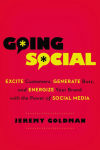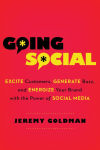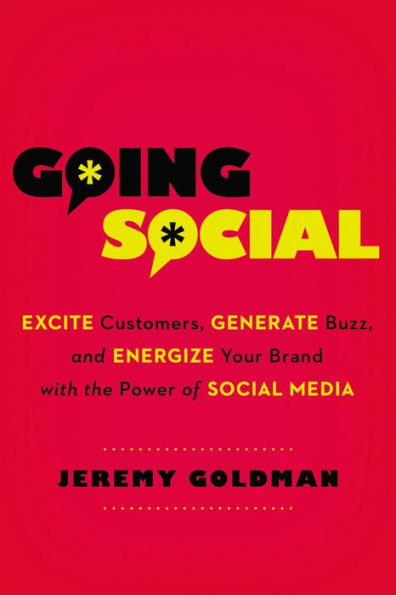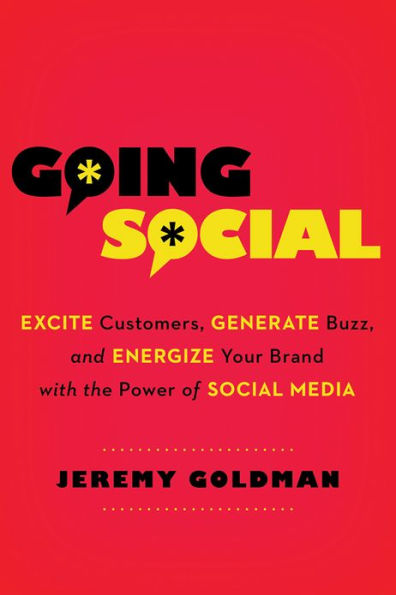In the increasingly vital world of social media marketing, if you don’t have a strong digital presence, it’s like you’re not even there. Going Social is an indispensable guide to taking advantage of digital marketing, reaching a critical number of prospective customers, and revitalizing your business’s brand. You’ll gain answers to the questions every marketer is asking, like How much is a Facebook “like” worth? What are the best dashboards for monitoring multiple social channels simultaneously? How do you keep it all going around the clock? And which automation tools, promotional ads, scheduling platforms, and social media channels offer the greatest return on investment? For more than a decade, author Jeremy Goldman has helped companies inject “social” into their marketing processes. He explains the ins and outs of platforms such as Facebook, Twitter, LinkedIn, Google+, Foursquare, Instagram, and Pinterest and teaches readers how to formulate a social strategy, pinpoint and cater to the right audience, give their brand a unique online voice, create relevant and engaging content, identify and reward influencers, build strong bonds with bloggers, become truly customer-centric, respond to negative feedback, use targeting to engage more effectively, turn employees into social marketers, and engage with ROI in mind.The digital landscape offers unprecedented opportunities to spread the word about products and services. While other businesses struggle to transition from traditional marketing to online engagement, you’ll be enacting a social media strategy that magnifies customer loyalty. Featuring insights from entrepreneurs, social media directors, community managers, bloggers, and other experts, Going Social will teach you how to leverage our brave new social frontier.
1111583558
Going Social: Excite Customers, Generate Buzz, and Energize Your Brand with the Power of Social Media
In the increasingly vital world of social media marketing, if you don’t have a strong digital presence, it’s like you’re not even there. Going Social is an indispensable guide to taking advantage of digital marketing, reaching a critical number of prospective customers, and revitalizing your business’s brand. You’ll gain answers to the questions every marketer is asking, like How much is a Facebook “like” worth? What are the best dashboards for monitoring multiple social channels simultaneously? How do you keep it all going around the clock? And which automation tools, promotional ads, scheduling platforms, and social media channels offer the greatest return on investment? For more than a decade, author Jeremy Goldman has helped companies inject “social” into their marketing processes. He explains the ins and outs of platforms such as Facebook, Twitter, LinkedIn, Google+, Foursquare, Instagram, and Pinterest and teaches readers how to formulate a social strategy, pinpoint and cater to the right audience, give their brand a unique online voice, create relevant and engaging content, identify and reward influencers, build strong bonds with bloggers, become truly customer-centric, respond to negative feedback, use targeting to engage more effectively, turn employees into social marketers, and engage with ROI in mind.The digital landscape offers unprecedented opportunities to spread the word about products and services. While other businesses struggle to transition from traditional marketing to online engagement, you’ll be enacting a social media strategy that magnifies customer loyalty. Featuring insights from entrepreneurs, social media directors, community managers, bloggers, and other experts, Going Social will teach you how to leverage our brave new social frontier.
7.49
In Stock
5
1

Going Social: Excite Customers, Generate Buzz, and Energize Your Brand with the Power of Social Media
288
Going Social: Excite Customers, Generate Buzz, and Energize Your Brand with the Power of Social Media
288eBook (First Edition)
$7.49
Related collections and offers
7.49
In Stock

From the B&N Reads Blog



